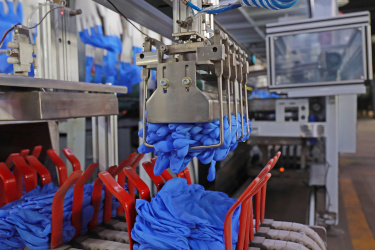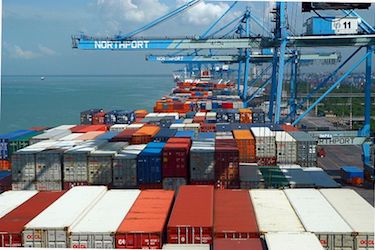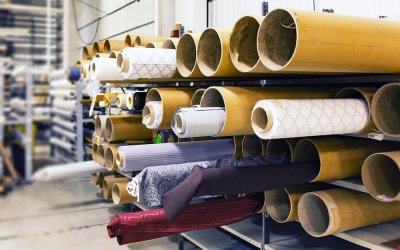Many importers have adopted a “China +1” approach in recent years.
Over the last decade, labor costs in China have steadily risen, and the country’s government — as evidenced by their Made in China 2025 plan — is moving away from low-cost, labor-intensive goods and focusing instead on high-end manufacturing.
Supply chain resiliency has also been a big topic, as many importers feel that concentrating all of their manufacturing in one geographic region puts their operations at risk in the event of a supply chain shock.
Malaysia is one country that many importers have looked to recently, and for those sourcing products such as solid wood furniture, nitrile disposable gloves, and electrical & electronics products, the country offers a strong manufacturing base.
Here we talk about Malaysia’s key products, infrastructure, and labor market.
Table of Contents
What are Malaysia’s Top Exports?
Malaysia exports products in a wide range of categories, but its top export group is electrical machinery and equipment.
This includes integrated circuits/micro assemblies, solar power diodes/semi-conductors, computers & optical readers, and phone system devices including smartphones.

Malaysia is now a major producer of nitrile gloves
Here is a list of Malaysia’s top 10 export product groups in 2019:
- Electrical machinery, equipment: US$82 billion (34.4% of total exports)
- Mineral fuels including oil: $34.5 billion (14.5%)
- Machinery including computers: $21.8 billion (9.1%)
- Animal/vegetable fats, oils, waxes: $11.5 billion (4.8%)
- Optical, technical, medical apparatus: $10.1 billion (4.2%)
- Plastics, plastic articles: $9.6 billion (4%)
- Rubber, rubber articles: $7.1 billion (3%)
- Iron, steel: $4.4 billion (1.8%)
- Other chemical goods: $4.1 billion (1.7%)
- Organic chemicals: $4 billion (1.7%)
(Source)
During the pandemic, Malaysia has become a major exporter of nitrile gloves, due to the country’s long-time position as a top rubber clothing exporter. There is an abundance of raw material available in the region since Southeast Asia is home to some of the top natural rubber producing countries — Thailand (1st), Indonesia (2nd), Vietnam (3rd), and Malaysia (6th).
The country is also known for producing high-quality solid wood home and office furnishings. In 2019, Malaysia exported $2.1 billion worth of miscellaneous furniture.
Of course, all of the wood, rubber, and electrical products Malaysia exports need to be transported via the country’s roads and ports.
How Developed is Malaysia’s Infrastructure?
Malaysia has made major efforts to develop its infrastructure in recent decades — investing in a well-maintained network of highways, international ports, and airports.

Quay cranes at Port Klang, the largest port in Malaysia (Source)
As a result, the country’s infrastructure now ranks 2nd within the ASEAN region, after Singapore (Global Competitiveness Report). It also ranks 35th in the world, which means it has a similar level of infrastructure development to China (36th).
The Malaysian government has also developed over 20 Free Industrial Zones (FIZs) throughout the country. These FIZs are designed to facilitate international trade by allowing export manufacturers to import duty-free raw materials.
The country’s high level of infrastructure development, paired with these FIZs, has lead to many attractive opportunities for companies that want to import Malaysian products.
But before all of those products can ship out, someone needs to produce them.
How Do Malaysia’s Labor Force and Labor Costs Compare?
Malaysia has a skilled workforce, and in fact, it ranks 8th globally for the skills of its current workforce. English is everywhere in Malaysia, and it’s very common in business, which means the language barrier may be lower than in other Asian countries.
When it comes to wages, Malaysia is comparable to China, and like China, the country is not necessarily a go-to place for labor-intensive products anymore. But as China’s labor costs have increased rapidly in recent years, Malaysia’s have remained relatively stagnant.
That being said, in February 2020, the Malaysian government raised the national minimum wage to 1,200 ringgits (US$283) per month, as part of their efforts to modernize the workforce. China’s minimum wages, meanwhile, range from 1,150 CNY (US$163) to 2,480 CNY (US$361) per month across the country.
Could Malaysia be a Viable Option for You?
If you are looking to diversify your manufacturing, Malaysia is worth considering, as long as you’re not just swaying with the political winds.
This type of move needs to be considered carefully and offer long-term benefits to be worthwhile.
Also, if you’re considering new suppliers in Southeast Asia or elsewhere, we recommend reading the following guide.
Free Guide
How to Prepare for a Factory Audit
A factory audit helps you assess a supplier's systems, capacity, workplace environment, or capabilities to ensure they meet your requirements as a buyer.
But which type of audit should you conduct, and which points should you cover on your checklist? In this free guide, you'll learn how to run an effective supplier assessment.





0 Comments